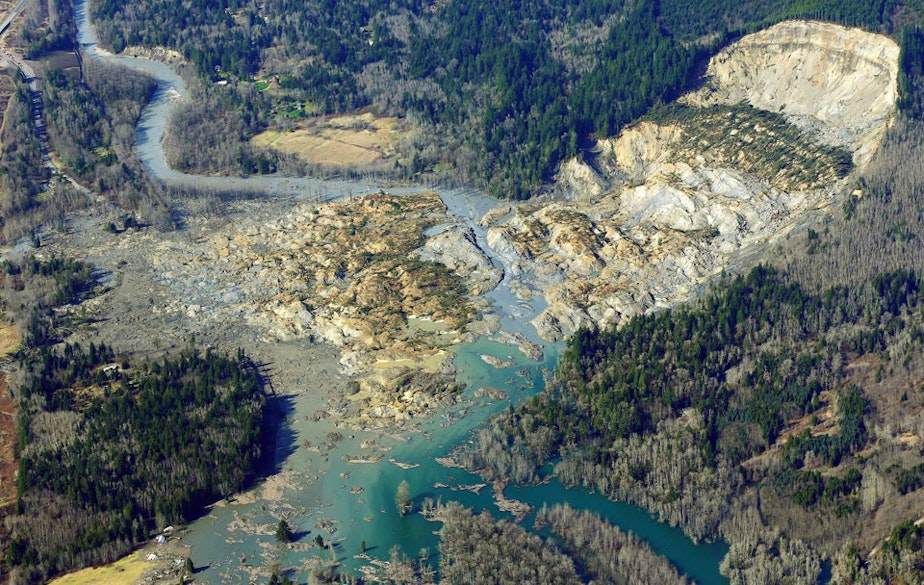1999 Report Warned Of Potential Catastrophe In Oso

David Hyde talks with geomorphologist Dan Miller about how Snohomish County officials should have been aware of the potential hazards for a mudflow occurring in Oso. Back in 1999, Miller and his wife Lynne filed a report for the Army Corps of Engineers warning about the possibility for a "large catastrophic failure" at the site of the recent mudflow.
Hyde: So you say this was a predictable disaster. Why?
Miller: It is predictable in the sense that there’s a historic record of activity on this landslide, extending at least back to 1952, and I think there’s evidence of it even in air photography going back to the '30s.
We’ve done analyses that looked at the areas of the landside zone that could potentially be unstable and estimated the volume of material that might be mobilized. What the 1999 report looked at was the potential for a landslide of the magnitude of that occurred in 2006. We also looked at a worse-case scenario that suggested that there could be a much larger landslide.
Coming up with a model that says “this could happen” is a lot different than it actually happening. These models are very rough; they’re made as sort of a screening tool.
Sponsored
We were doing these analyses for the purpose of estimating sediment inputs to the Stillaguamish River, to find strategies for slowing movement on the landslides to improve water quality for fish habitat. We weren’t thinking about the hazards beyond that.
Hyde: But you went up to the areas in 2006 and saw a lot of new homes being constructed. What was your reaction to that?
Miller: I thought that was not a good idea. In fact when we learned about this landslide actually occurring, I am quite angry. And I suppose that’s a logical reaction. What we could have done about it, I don’t know.
People have been living in that area for a long time. My reaction is that the county should not have allowed permitting there, but I’m sure it was grandfathered in in some way. If you’re going to tell people that they can’t build on properties they own, you have to have a strong justification for doing so. Maybe in hindsight, we did have justification, and somebody could have done that.
But I produced an analysis that was looking at a different question; it was a preliminary model, it was one that certainly pulled up a red flag that this is an area that is potentially dangerous.
Sponsored
That information was used for coming up with mitigation strategies for improving fish habitat and apparently was never translated to planners at the county or homeowners.
Hyde: Do county planners look at that document when they sign off for new construction?
Miller: Ideally they would. The state has a Critical Areas Ordinance, which I’m not familiar with all the details, but one of the things the Critical Areas Ordinance does is ask counties to map out landslide hazards. One of the ways to map out landslide hazards, if you don’t have a lot of resources, is to find all the reports that have been written and the mapping that’s been done in the county.
These reports were available; they should have found them, and they should be been on file at the county.
Hyde: What is the public policy lesson? What could be done to prevent tragedies like this from happening?
Sponsored
Miller: What we need to do now is to work to make sure everyone is well informed. County planners are well informed about what the risks are, what the potential consequences of decisions that they make are. That home owners can be well informed.
We’ve had much of this information available, but it’s always been tucked away in professional journals, proceedings of meetings or reports in file cabinets. Now we have the technology to make this information much more accessible.
I know that many counties, cities, government agencies have been acting to make data they have available. You can go to an interactive website to look at maps and pull up information. And I think we really need to work to make sure that the information that people need to make informed decisions is available to them and available to them in a manner that they can understand. So they can pull up a map of the Stillaguamish basin and see precisely where studies have indicated the risk for landslide exists.
Hyde: Thanks so much for taking the time.
Miller: You’re welcome.

